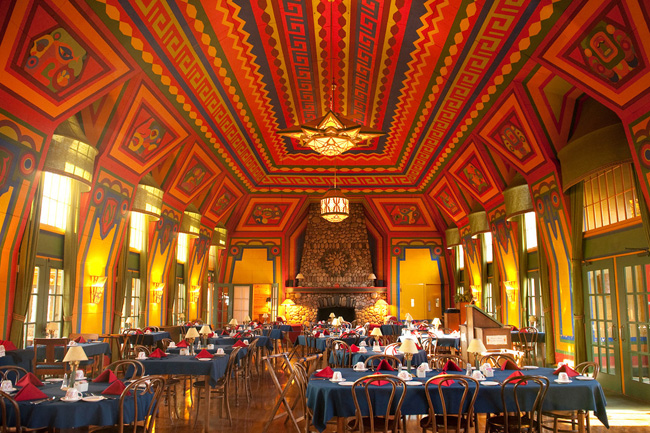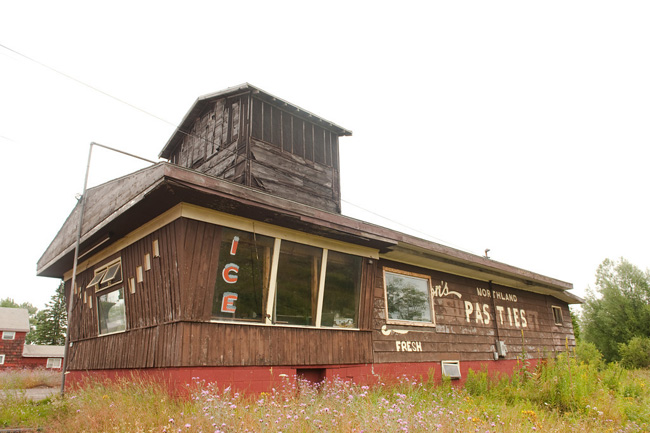 Keeping Heavy Table running isn’t quite enough to keep James Norton and Becca Dilley busy (even though you’d really think it should be). When the couple had finished up The Master Cheesemakers of Wisconsin, an oral history of the state of the cheese industry in that state, they started looking around for a new project, one they could approach in a similar way.
Keeping Heavy Table running isn’t quite enough to keep James Norton and Becca Dilley busy (even though you’d really think it should be). When the couple had finished up The Master Cheesemakers of Wisconsin, an oral history of the state of the cheese industry in that state, they started looking around for a new project, one they could approach in a similar way.
So, they looked north.
Their newest book is Lake Superior Flavors: A Field Guide to Food and Drink Along the Circle Tour (University of Minnesota Press, 2014). Like Master Cheesemakers, Lake Superior Flavors combines culinary sleuthing (it’s hard to keep a hidden gem hidden from Norton and Dilley) with fascinating interviews and nearly 100 remarkable photos.

Norton’s the writer and Dilley’s the photographer, but they do their research and their traveling together. Over the course of a half dozen trips (including two completely around the lake), they visited more than 75 restaurants, cafes, bakeries, and brewhouses — just about any sort of place where you can get a bite or a sip. They talked to chefs, bakers, brewers, foragers, goat-farmers, cultural interpreters, and jam-making monks. And then they took all of that raw material and put together a loving portrait of the foodways of the Lake Superior region.
(You can meet Dilley and Norton and taste some of their favorite foods at Kitchen Window on April 18; they’ll also be signing books and doing a reading at Common Good Books on April 21 and at the Fitger’s bookstore in Duluth on May 3. On July 19 at 9am, they’ll sign books and talk about their travels at World’s Best Donuts in Grand Marais.)

HEAVY TABLE: Can you talk a little bit about how the book came to be?
BECCA DILLEY: Years before, I had read an article in National Geographic Traveler about the Shipwreck Coast around Lake Superior. It seemed like a place that still had a lot of ragged edges to it, even though a lot of it is so heavily touristed.
JAMES NORTON: Lake Superior feels like a legitimate region, like a separate place. It’s not just Wisconsin. It’s not just Minnesota. It’s not just Canada. It’s its own world. And one of the defining features of a world is its cuisine, the way people eat, the folkways.

DILLEY: I also liked the idea of how up there, everything old is new again: eating local fish, as opposed to going out and having a cod fish fry. Around Lake Superior you can find places where that had never stopped.
HT: What did you find that makes the Lake Superior region hang together as a region?

NORTON: Obviously, there’s the proximity to what is essentially a freshwater ocean. That means plenty of lake herring and whitefish, from the very working class — you’ve got smoked fish pretty much everywhere — all the way up to celebration food — a whole whitefish in a beurre blanc (above) or something sophisticated. Local fish is a big part of it.
Another part is that you see the same cultures around the lake: Finnish, Italian, Ojibwe. And pie, for some reason, is really big. The pie is always good. You can’t get bad pie up there.
DILLEY: I think there’s also a sort of independent self-sufficiency that’s been there a long time.
NORTON: There’s a practicality to the people and the food. There’s not a lot of fuss or ceremony or pretense. It’s very clean and classic and direct, which is how I like to eat anyway. It’s fun to go to a region where there’s not a lot of whistles or bells.

HT: What regional differences did you see?
NORTON: The four regions we explored were all distinct from one another. The South Shore [Wisconsin’s Superior shore] had a very liberal, progressive, New York Times–reading, bed-and-breakfast kind of feel to it. The UP (above) has this really rough-and-tumble mining, rustic, Finnish thing going on. Canada just felt literally 20 years in the past and just felt really isolated from everyone else, and that was fascinating.
And in Minnesota we all know the North Shore. Every restaurant that opens up there has to decide: To what extent are we catering to tourists and to what extent are we catering to locals?

HT: You write that that tension has improved the food on the North Shore, because restaurants need the locals to pass along the good word of mouth to the tourists.
NORTON: I think a good example of that is Northern Waters Smokehaus in Duluth. Eric Goerdt (above) is doing wonderful smoked fish from the lake, and he’s presenting a ton of local influence in the food that is completely in line with what the people from San Francisco and New York are looking for. But he serves it in sandwich form, which is really unpretentious, really approachable. Locals love it. It’s delicious.
And then there’s the Jampot on the Keweenaw Peninsula. Locals love to go there and pick up the jam or chocolate truffles or holiday bread, and tourists love it too. A really good way to succeed on Lake Superior is to find a way to cultivate both those groups.
HT: You also dig into the history of the area and the foods and describe a conversation between the past and the present.
NORTON: It’s really hard to tell the story of what you’re seeing now without telling the stories that preceded it. A lot of that goes back to the mines, the displacement of native peoples, and the arrival of new immigrants. We wanted to do more than just eat at these 10 restaurants. We wanted to give a fuller picture.
DILLEY: The book is not a tour guide, although you can, to a certain extent, use it that way. It’s meant to have a longer life. Even if some of the places in there might not be around in 10 years, there’s still something about the stories that we’re telling now that will still be interesting. It’s not just where to eat, it’s what the food is like in these places.

HT: Do you have a favorite story from the book?
DILLEY: How could you not love the jam monks [who run the Jampot in Keweenah]? If you’re going to talk to a bearded, jam-making monk in the middle of the Keweenah Peninsula, it’s exactly the experience you’re hoping you’re going to have. Father Basil (above) was so funny and wise.
NORTON: And their thimbleberry jam (no one makes thimbleberry jam because thimbleberries are very hard to pick). You have to kind of stroke them off the bush and bushes come ripe two or three times a day when they’re in peak season, so you have to keep going out and getting them. It’s a massive hassle. But they do it and it tells a story of that place. They also make something called abbey bread, and it’s the best fruitcake I’ve had in my life by a long shot. It’s beautiful.

Meeting the monks and just seeing what they’re doing was special. It’s this balance between work and spirituality. They’re in the wilderness to connect with God, but they also feel like they need to be connected to the world, and the food is how they connect with the world.
HT: What about the foods? What were your favorites?

DILLEY: I would say the herring roe at Angry Trout. It wasn’t like caviar; it was really granite-y. We had great smoked fish everywhere, which we were expecting, but some of the fresh fish was surprisingly good, especially herring — firm, clean-tasting, delicious.
NORTON: The cold water makes a firmer fish because they grow more slowly. I particularly liked a whitefish at the Deep Water Grille in Ashland that they call a “beer blanc.” They use their own beer to make a beer reduction sauce.

Another of my favorite food memories was in Thunder Bay. We went to a Finnish bakery and Harri, the guy who runs it, made us take a pulla, a cardamom loaf, on the way out. We didn’t really eat that day. We were just driving from interview to interview to interview and pretty soon we were starving. So we started eating handfuls of this pulla in the car, and it was delicious and sustaining and amazing.
HT: What direction do you think this area is heading in? What do you think it will be like in five or 10 years?
DILLEY: It really depends on the region. In Thunder Bay, there are only a few places that use local lake fish, but the fact that they’ve started is a huge improvement. They’re just starting to embrace local flavors both for tourists and for locals.
It really felt like the green shoots of a big food revolution were already there.
NORTON: And every part of the lake is further ahead but in some different stage of that development.

DILLEY: The North Shore is already starting to have a nice high-brow / low-brow thing going on. Northern Waters Smokehaus and Duluth Coffee Company (above) are both perfect examples. They have all those hot words: “artisan,” “handcrafted,” all that, but they are still everyday foods. They’re approachable. You can live in Duluth and go out to lunch regularly for those sandwiches or get your beans regularly at Duluth Coffee Company.
You don’t necessarily have to sit for three minutes while they make your coffee, but you can have that experience — or even go to a cupping — if you want. You can have a slight upgrade to your regular cup of coffee and have this whole local story to tell about it, too.
I think that’s something you’re going to see a lot more.

Congrats, guys, this looks fabulous. My copy’s on order.
Brett